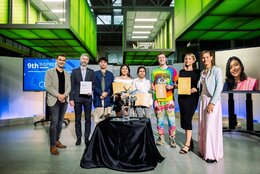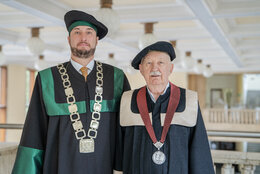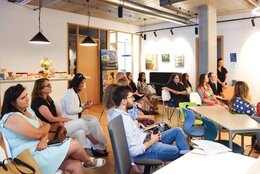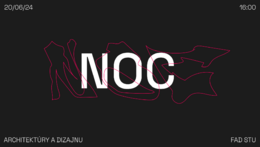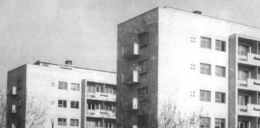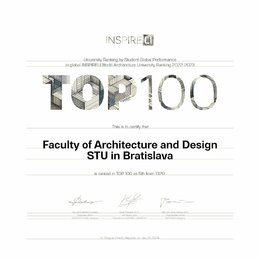Interreg
- interreg DTP3: Valorising cultural heritage and fostering sustainable tourism by LIVING the common heritage on the DANUBE LIMES as basis for a Cultural Route, LIVING DANUBE LIMES; DTP3-359-2.2 (359); 1.7.2020 – 31.12.2022 (active)
Based on already existing work developed by predecessor projects like Danube Limes Brand and DANUrB this project is a foundation stone for a future Danube Limes Cultural Route, representing Roman heritage along the Danube Limes, connecting all countries in the Danube Region and linking them to the huge network of the Frontiers of the Roman Empire, stretching from the Hadrian’s Wall in Great Britain to the Limits in North Africa and the Near East. In the network of UNESCO’s World Heritage property “Frontiers of the Roman Empire” the Danube Region is a core element. Further developing and enhancing the connecting aspects of the Roman heritage sites along the Danube combines the tangible and intangible heritage by not only stressing the common history, but also supporting the differences in culture and nature along the former border of the Roman Empire, which was more of a transnational, cultural, and economic waterway than a strict border in modern sense. Pilot sites and activities are identified and serve as role models for the development and implementation of transnational strategies for increased and sustainable tourism and protection of the cultural sites. Combined with living history activities these sites will characterize the Danube as a broad fluvial band of different tourism and educational products and thereby increase the tourist significance of the entire area. All living history, training, knowledge-transfer and capacity building events will be accompanied by information, dissemination and publicity measures for the identified stakeholders and especially the citizens in order to foster a common sense of togetherness in the Danube Region and to ensure a sustainable and eco-friendly protection of cultural heritage. Durability will be reached through the establishment of transnational clusters of museums and visitor centres, the involvement of living history associations from the whole Danube Region and the high integration of the public into the project.
- interreg DTP3: City Storage and Sector Coupling Lab, CSSC-Lab; DTP3-538-2.2 (538), 1.7.2020 – 31.12.2022 (active)
Based on a recent study published by EUSDR PA2 renewables will provide 50% of SEE power demand in 2030. With higher levels of utilization of RES energy storage is becoming the key in the next phase of the energy transition in all Danube countries. Even in the most advanced regions the introduction of innovative energy storage and sector coupling applications has just started to gain momentum. As these challenges particularly hit medium-sized and smaller cities, adequate City Storage and Sector Coupling (CSSC) solutions are needed to ensure efficient energy use and increased energy security. CSSC Lab will prepare the ground for accelerating the up-take of CSSC solutions by Danube region cities which are at very low level because public authorities possess little knowledge and are shy of the risks of investment. To overcome this barrier, the CSSC Lab project will implement a capacity building programme for municipalities and demonstrate the viability of CSSC solutions for medium-sized and smaller cities in the Danube region. The CSSC Lab consortium consists of 17 PPs (AT, BG, CZ, DE, HR, SI, SK, RO + BiH, ME + MD) from energy agencies, expert organisations and pilot cities, with support from EUSDR as ASP and a large network of ASP cities. CSSC Lab will:
1) elaborate model solution+assessment toolkit for typical urban CSSC use cases,
2) develop/pilot a capacity building programme for municipalities with local trainings, webinars and city coaching sessions,
3) establish four CSSC demo-centers in different partner regions (HR, AT, SI, BG) to demonstrate the feasibility and performance of different CSSC solutions,
4) set up an online CSSC.
Lab learning platform for sustainable knowledge transfer. Overall, the CSSC Lab project aims at building up a pipeline of CSSC replication projects in target cities across the Danube region. Regional action plans ensure practice transfer at reg. level. Transnat. Policy Recommendations contribute to EUSDR PA2 and PA10 strategies.
- interreg DTP3: Strengthening the cultural identity of the Danube region by building on common heritage of ART NOUVEAU, ART NOUVEAU 2; DTP3-748-2.2 (748), 1.7.2020 – 31.12.2022 (active)
The present project is a continuation of the ARTNOUVEAU project (from now on AN1), financed within the 1st CfP of the Danube Programme. Most of the partners are already cooperating within that framework, managing to achieve significant results in creating transnational professional cooperation processes in the field. One of the achievements was the identification of the challenges faced by the communities sharing Art Nouveau as a common element of their cultural heritage. These created the basis of the present proposals which is meant to address some of the most significant needs identified, as
- developing the educational offer for the local communities in order to make them more aware and knowledgeable of the values of AN heritage, and thus contribute to a more efficient preservation of their cultural heritage,
- increasing the transnational professional cooperation, especially in fields which are having an impact on the contemporary life of communities,
- developing the promotion of the AN as a touristic product, in order to ensure sustainability and to contribute to development of the region.
In tackling these challenges, the partnership defined a set of objectives which are directly addressing them, proposing a series of activities which were designed in such a way that are most effective in generating transnationally replicable results Hence, educational programs are proposed for different target groups – young generation and adults – offering them instruments to enlarge the knowledge about their environment and their identity. Research will be performed in order to explore less known AN works and to reveal concepts which generated long-lasting impact. New solutions will be identified for increasing the touristic valorisation of the AN heritage, in a professional, more market-oriented approach. All these will be complemented by strengthening the institutional bonds and increasing the presence of AN in the cultural policies of the region.
- interreg DTP3: názov projektu: DANube Urban Brand + Building Regional and Local Resilience through the Valorization of Danube’s Cultural Heritage; DANUrB+; DTP3-433-2.2 (433); 1.7.2020 – 31.12.2022 (active)
DANUrB+ aims to reactivate underused cultural heritage and resources in shrinking settlements of Danube river’s peripheral and border regions, to create new possibilities to make its towns and regions attractive again. We build on the work of DTP1-249-2.2 DANUrB, where the basis of a Cultural Promenade were laid down with a consistent Strategy, a functional Platform based on a wide Cultural Network, helped by thematic Tours. Such DANUrB tools were found to be most useful in peripheral and border regions, where the decaying socio-economic situation can only rely for development on the special resources of the Danube. DANURB+ creates a dense network of stakeholders and projects along the Danube implementing EUSDR actions in the peripheral and border regions along the river which can count only on the potentials of the Danube to stop socio-economic shrinkage. The main objective is the capacity building for local stakeholders in order to enable them to cooperate locally and interregionally for the valorization of their Danube related heritage with local actions under a unified brand strong enough to increase local prosperity and international tourist attractiveness. DANUrB+ contributes to SO 2.2 by fostering resilient use of cultural heritage and resources in the shrinking communities along the river Danube. The project consists of 4 horizontal thematic flows across 4 vertical WPs: Research, Planning tools, Education and Actions. Thematic flows are: A1 interregional network as a possibility, A2 shrinking cities as a challenge, A3 locals and their cooperation as a development asset, and A4 heritage as a tool. In this matrix of work the goals of DANUrB+ become clear and easy to follow. The novelty of DANUrB+ is to bring down to earth strategic goals to real stakeholders with action plans and actions usable in peripheric situations parallely in all sections of the Danube, and to brand these initiatives in inclusive and effective ways.
- Interreg DTP: DANube Urban Brand, DANUrB, DANUrB; DTP1-1-249-2.2; 1.1.2017 – 30.6.2019 (finished)
DANUrB - a regional network building through tourism and education to strengthen the “Danube” cultural identity and solidarity. Cultural network aims to strengthen the Danube regional cultural identity and to create a common brand by fostering transnational cultural ties between the settlements along the Danube, and by exploring the unused or hidden cultural and social capital resources for a better economic and cultural return. The main goal of this Interreg Danube Transnational Programme project is to create a comprehensive spatio-cultural network, a “Danube Сultural Promenade” connecting all communities along the river, unifying these into one tourism destination brand, offering thematic routes and developing possibilities that can increase the number of visitors and can prolong their stay in the region. Project partners – relevant universities, research and development centers, regional and local governments, cultural NGOs, tourism boards and professional market based agencies – will create a network and platform to work along a sustainable cultural and tourism strategy, proving that a common Danube urban brand can bring social and economic benefits at once. Very important in this process is that international knowledge and practice will be implemented in local conditions. The closest cooperation with communities and regional stakeholders from Danube countries, creation of common strategy based on individual approach and site specific, can guarantee durability of the project results expressed in sustainable maintenance of Danube Cultural Promenade by local neighbors with economic independence on basis of boosted development of tourism and cultural industry.
EHP and Norway Funds
- Grant EHP a Nórska: Empathy in Arts; EMIA; CLT02015, 22.7.2020 (active)
The EMIA project responds to several problems in the field of higher education and student attitudes.
- At the Faculty of Architecture and Design a research was conducted on opinion students' attitudes towards marginalized groups. The results showed negative attitudes towards various disadvantaged groups (foreigners and immigrants but also social, ethnic and other minorities in particular).
- Despite the fact that curriculum content includes design with specificities for vulnerable and disadvantaged groups, students tend to design for general economically and socially strong, and healthy client in their proposals
- Although an interdisciplinary approach is expected in architecture (the field between technology and art), students are most closely focused within the field and have little interest in other types of art. They are not used to being passive or active participants in other kinds of art
- In design, architecture and design students focus on outputs that they particularly like and neglect the ability to offer and sell them to the end user. There is no client-centered approach.
(The long-term plan of the Faculty of Architecture and Design of the Slovak University of Technology in Bratislava is a strategic document for the next four-year period 2019 – 2022, which modifies its mission and tasks in more detail.)
By implementing the project we will pursue these goals:
- to deepen students' social competences through closer knowledge of various vulnerable groups, as well as adverse social phenomena in the past and present
- Improve a client-centered approach by knowing the needs of and working with disadvantaged groups
- actively involve students in artistic activities and cooperation with other groups (age, social, health, ...)
- Improve business, economic, financial skills...
To achieve these goals, the Faculty of Architecture has created a Creative Center platform that goes beyond the curriculum. The aim of the Creative centre is to bring students of Architecture and Design study programs not only to these art areas but also to introduce them to other types of art. The Creative centre has been aspiring to attract students from other schools of the arts as well as the general public, creating an interdisciplinary and social platform for informal meetings, working contacts and creative activities reflecting the importance of the diversity of the cultural manifestations.
In the project we will implement the following types of activities: joint creation of bilateral theatrical performance, creation of a visual art work with the theme of social inclusion, discussions of social issues through created "imported" works of art. In the field of architecture and design we will carry out three other activities: workshop – design of an object/ or a building for disadvantaged group, workshop – creation of product for selected disadvantaged group, lectures on architecture in Norway with discussion.
Erasmus
- Erasmus KA2: CREATIVE DANUBE: INNOVATIVE TEACHING FOR INCLUSIVE AND DEVELOPMENT IN SMALL AND MEDIUM-SIZED DANUBIAN CITIES; 2019-1-RO01-KA203-063878, 1.10.2019 – 31.8.2022 (active)
Many European programs and projects, derived from the EU's ”Cohesion policy” established by Lisbon Treaty, points to ”economic, social and territorial cohesion”. Many of the projects funded by ERDF, among which Danube Transnational Programme focus on different themes related to Danube seeking answers and solutions to strengthen the cross-border cooperation and to create a coherent network of valuable assets and capabilities to sustain an inclusive and sustainable development in this region.Particularly, the DANUrB project(http://www.interreg-danube.eu/approved-projects/danurb) has created a vision of Danube as an identifiable ”tourist destination brand and a cultural promenade at European level, offering thematic routes and development opportunities that can increase the number of visitors and can prolong their stay in the region”.In a critical view on the existing project, we can say that although it also included universities in its consortium, DANUrB did not specifically pursued the creation of an educational framework dedicated to the inclusive development of Danube cities, and did not focus on the students to be the main beneficiary of the trans-disciplinary formative process that regards the development potential of the Danube spaces and landscapes. In the desire for a coherent and more balanced development of the Danube region is essential to consider the differences in the existing levels of development between the various Danube countries and cities and, at the same time, the differences in the problems faced by the big cities/capitals and the small and medium-sized cities (SMCs) along the river. Most of these small and medium-sized cities are confronted with shrinkage processes, labor shortages, loss of local identity together with diminishing of the river industry. In many cases they are sprawled or incoherent as spatial development, encountering aggressions on the natural landscapes and loss of the relationship with the river. The notable differences of development between the Lower Danube and the Central-Western Danube come to confront these small and medium size cities, mirroring a series of similarities and/or contrasts, in terms of land reserves, dynamics of peripheries, conflicts between natural landscape and residential areas, unused buildings and lack of tourist attractions.
- Erasmus K2: DESIRE – DESIgn for all methods to cREate age-friendly housing; 2020-1-SK01-KA202-078254; od. 1.12.2020 (active)
Europe's ageing. Eurostat population projections foresee that the number of people over 65 is expected to grow up to 28.50% by 2050. According to the World Health Organisation (WHO), the physical and social environment are key determinants of whether people can remain healthy, independent and autonomous long into their old age. Therefore, housing is an important determinant for active and healthy ageing. However, a large part of the housing stock in the EU has not been designed to accommodate the needs of older people. That said, a great opportunity for the building and home furnishings sectors remains open. What is needed is to enforce innovative actions at training level to overcome skills mismatches and promote new design guidelines focused on older adults' needs. This disruptive change will require a rethinking approach at VET level, as well as a revolution in the minds of professionals and consumers due to lack of awareness and information. D4All has been recognised as a tool to ensure accessibility, wellbeing, physical and mental health for older adults and enable a conscious use of the analysis of the needs as requires the involvement of end-users (Human-Centred Design). In addition, DESIRE will be based on a restorative and ergonomic environmental design in order to detect the interactions between humans and the built environment. This will ensure that, firstly, older adults and, secondly, future generations can remain longer at home while ageing with equal opportunities without facing physical and social barriers in age-friendly housing. DESIRE aims to provide professionals in the building industry and home furnishings sector with the tools and skills to apply D4All methods as an integral part of the design process to create or adapt age-friendly housing as a solution for the well-being, comfort and autonomy of the older adults or dependents at home.
- Erasmus KA3: Learning Landscapes – Bridging the Gap/Building Community with a Common Landscapes Narrative; 2020-1-SK01-KA203-078379; 1.9.2020 – 31.8.2022 (active)
The aim of the Learning Landscapes project – Bridging the Gap / Building Community with a Common Landscapes Narrative is to create a strategic partnership and knowledge alliance to prepare two international educational events – a student workshop on the local landscape and a student competition within the regional forum LE: NOTRE Landscape forum. The main goal of the project is to create an interdisciplinary educational platform for the development of knowledge alliances addressing local challenges for the country, with the strengthening of creative thinking with the strengthening of the capacities of relevant stakeholders and associated partners in the territory.
- Erasmus K205: Empowering the Rural Tourism through Entrepreneurship with Youth, RURAL YOUTH
K tomuto projektu zatiaľ nemáme žiadne dáta
APVV
- APVV - Bilaterálna spolupráca: APVV SK-PL-2018-0022 (2019-2020) - LIVA - The concept of livability in the context of small towns 2019-2020 (active)
The problem of the development of small towns is often marginalized in relation to the areas of big cities, central settlements, where all attention is focused, in the planning, economic and social sense. However, small cities fulfill important functions in the settlement structure in Slovakia and Poland. The project aims at livability in small cities including selected regions in both countries. The main goals of the project are: 1. Analysis of the impact of livability on small town development, 2. Evaluation of the potential of the town (in terms of planning, landscape, architectural and social aspects), 3. Elaboration of guidelines for the creation of friendly places to local communities. In Poland, the subject of research will be the towns associated in the Cittaslow network, while in Slovakia, cities of similar character, but not connected to the network. It could give an answer for a question: does belonging to the Cittaslow organization affect livability of small towns? The project will also examine different approaches, such as smart city, green infrastructure, nature-based solutions, cultural heritage, revitalization of public spaces, and traffic calming measures. The involvement of PhD. students and young scientists will culminate in attending conferences and scientific events and in joint publication outputs that will support their scientific career and increase the quality of their research works.
- APVV - Bilaterálna spolupráca: Princípy udržateľnosti v kontexte historických urbánnych štruktúr, SK-AT-2017-0014; 1.8.2018 – 31.12.2019 (finished)
The philosophical basis of the project lies in sustainability expressed in the principle reduce–reuse – recycle transposed to architecture and urbanism. Respect for historic buildings or settlements is primarily motivated by cultural sustainability. These, however, also offer significant potential of energy, economic and environmental sustainability. At present, the demands for ideological and institutional protection, revitalization, adaptation and use of built cultural heritage as a counterpart to a new construction are increasing. The project is aimed at systematization and categorization of parameters of sustainability within historic buildings and building settlements. In this context, it seeks to identify the appropriate extent of application of energy efficiency measures in the scale of building and urban structure. The project will examine different approaches, such as the implementation of renewable energy sources (PV, ST), the densification of urban structures by the method of solar envelope, the application of innovative structures (membranes), the evaluation of parameters of external and internal environment (climatic measurements, the quality of public spaces), the environmental and economic complexity of the buildings' life cycle, or the comprehensive involvement of existing structures in the concept of the "smart city" (energy cooperativeness of urban structures, smart grid). The research will support the sharing of research infrastructure as the "artificial sky" laboratory at DUK and simulation of solar irradiation using 3D models made in the University ́s Science Park at FA STU. The involvement of PhD students and young scientists will culminate in attending conferences and scientific events and in joint publication outputs that will support their scientific career and increase the quality of their research works. The project will ensure continuity of research topics by submission of a project application in the field of historical urban structures.
EIT Manufacturing
- STU ako lider Digitálnej koalície, OIKONET, OIKODOMOS I. a OIKODOMOS II . - Zodpovedný riešiteľ Viera Joklová
Within the project, the Slovak University of Technology in Bratislava focuses on fulfilling the obligations arising from its membership in the Digital Coalition as one of its main initiators in the following areas: - Innovating education in computer science study programs, listing socially current and attractive topics of team, semester and year projects, final, diploma, dissertation works according to internationally recognized standards, - Develop ICT talents at the university, support the participation of students in international competitions, support young researchers mentoring and financially, - Carry out research in promising areas of ICT, including areas such as web oriented technologies, cyber security, Big Data, Cloud Computing, artificial intelligence, etc., - Prepare and submit a project of long-term strategic research in the field of industrial technologies for the 21st century using the synergy of research of advanced materials and digital technologies (including tane Industry 4.0). The project is mainly focused on fulfilling strategic goals in the field of Human Resources, especially achieving consistency between staff motivation and institutional funding for employees working in areas directly related to STU's commitments in the digital coalition, where the difference in financial evaluation outside academia is significantly higher. This will increase the motivation of researchers and at the same time strengthen human resources, when project researchers will be rewarded based on the results achieved on the project. Indirectly but significantly, the project intervenes in the field of education and research and creative activities, as it will enable the improvement of study programs, support quality research results and also the acquisition of talented young people to study and work at STU.
REGIOGOES - Regionale Potentiale im Grenzgebiet Österreich - Slowakei. Entwicklung neuer
grenzüberschreitender Wohn-, Arbeits- und Freizeitmodelle
Doc. Ing. arch. Andrea Bacová, PhD.
01.01.2013 - 31.12.2014
Das Projekt REGIOGOES wird den Wohnbau sowie die siedlungsspezifischen, soziodemographischen und baukulturellen Entwicklungspotentiale des Grenzgebietes Bratislava und Nordburgenland analysieren. Auf dieser Grundlage werden in ausgewählten Orten neue innovative Bau- und Wohnformen für diverse Alters- und Sozialgruppen entwickelt sowie alte Baustrukturen mit neuen Funktionen besetzt. Ein wichtiger Aspekt dabei ist die Aufwertung und Bekanntmachung des baukulturellen Erbes in dieser Grenzregion.
Programm zur grenzüberschreitenden Zusammenarbeit Slowakei -Österreich 2007 - 2013, creatin the future, EFRD EÚ.
MobEx 2013–2014. Water and City – Brownfields
MobEx 2013–2014. Voda a mesto – brownfieldy
International Visegrad Fund, project no.: 21310101
09/2013–08/2014
The project team is making the analyses of brownfields, which are located in contact with the water surfaces in the important centres of the V4. The selected examples verify new possibilities of functional usage for these areas. Subsequent comparison of solutions will provide a comprehensive picture on the transnational level of V4 countries. The project outcomes will be presented in the form of mobile exhibition, lectures at the conference in Bratislava and the compilation of scientific publication. The project is involving all V4 countries. More info: http://mobex2013.weebly.com
OIKOnet - A global multidisciplinary network on housing research and learning
Ing. arch. Viera Joklová, PhD.
1.10.2013 - 30.9.2016
OIKOnet (www.oikodomos.org) is a three-year pedagogic research project financed by the Life Long Learning programme, whose purpose is to create an international
platform of collaboration to study contemporary housing from a multidisciplinary and global perspective. A total of 34 organizations from 29 countries in Europe and around the world are part of this network. OIKOnet is a follow-up of the previous OIKODOMOS project which was carried out during 2007-2011.
OIKOnet will intertwine three areas of activity through sub-networks:
1. research on housing studies from a multidisciplinary and global perspective;
2. participatory actions to engage communities in the definition, solution and evaluation of housing problems;
3. pedagogical activities which bring together different stakeholders, learning environments and disciplines.
OIKOnet brings together schools of architecture and urban planning, research institutes, social groups, transnational organizations and local administrations. Altogether, the interactions across different stakeholders and disciplines will provide new insights on the contemporary housing conditions, and will help to forge links between academia and the social and economic milieu, between research and learning, and between the European education space and other universities around the world.
OIKODOMOS - Consolidation and expansion of a Virtual Campus
OIKODOMOS - Konsolidácia a rozšírenie virtuálneho kampusu
Ing. arch. Viera Joklová, PhD.
1.11.2010 - 30.11.2012
OIKODOMOS (www.oikodomos.org) is a pedagogic research project financed by the Life Long Learning programme carried out by higher education institutions and research centres from Belgium, France, Slovakia, Spain, Switzerland Turkey and the United Kingdom. The goal of OIKODOMOS -a Greek word for "the builder of a house"-, is to create a virtual campus to support and promote housing studies at a European scale.
Euroscapes - green management plans for Euroepan urban and periurban landscapes
Koncepcia údržby zelene v urbánnych a suburbánnych európskych krajinách
INTERREG IVC
doc. RNDr. Ingrid Belčáková, PhD.
01.01. 2010 - 01.01.2013
Interreg IC Project Euroscapes is focused on landscape management and planning in the european context. The project has the objective offering a new landscapes-management model as a policy instrument to implement the European Landscape Convention objectives. The project considers landscape to be a contribution to a local cultures being a basic component of the european natural and cultural heritage as well as the key element of individual and social well-being.
Sieť vzdelávacích inštitúcií v oblasti krajinnej architektúry
ERASMUS Academic Networks LE:NOTRE
Ing.arch. Katarína Kristiánová
1.10.2010 - 30.9.2013
LE:NOTRE III is a continuation of the LE:NOTRE Thematic Network Project in Landscape Architecture. The outcome of a new strategy is the creation of the LE:NOTRE Institute, also known as the ‘European Institute of Advanced Studies in Landscape Architecture' as a model of a decentralised network, which combines in a new way the three sides of the Knowledge Triangle: education, research and innovative practice.
Fit 2 E-CAR
Doc. akad. soch. Peter Paliatka, Mgr. art. Michala Lipková
Prvá fáza 2010/2011, druhá fáza 2011/2012
http://design.stuba.sk/category/project/e-car/
The goal of the first phase of the Fit 2 E-Car project was to create a vision of electromobility for the next decade. The emphasis was put on the complex scope of the project - the students were working on several aspects of electromobility - covering wide range of partial problems (changing stations, city transportation infrastructure, car body exterior and interior design, MMI, interface, accessories, Color & Trim). After bringing three complex visions presented in Mladá Boleslav in 2011, the second phase brought new challenge in the form of a technical package, number of constraints that were set by the Technical Support of Škoda Auto. Each of the three teams is formed by students of FA STU and 2 students of the Faculty of Engineering. The main challenge is to create three different and integrated electromobile vehicle solutions, that will present design concept based on realistic construction background.
Projekt FLOWERS FOR SLOVAKIA
Doc. Akad. Soch. Milan Lukáč, Mgr. art. Michala Lipková
2009 - 2010, 2010 - 2011
www.flowersforslovakia.com
http://design.stuba.sk/category/project/flowers-for-slovakia/
Flowers for Slovakia is a collaborative design platform, that is aimed to give special possibilities to selected students who highlighted themselves with their attitude, talent and skills in the field of design. As a result of the first year of the duration of this project we are proud to present a collection of 12 glass design objects from 10 different authors titled „Handle with Care". Each of the objects is a metaphoric interpretation of different Slovak folk tale. The collection is a result of one year of educational process, that included conceptual as well as hands-on workshops. More inforrmation abot this project can be found on the website www.flowersforslovakia.com. The project was realized with financial support of the Ministry of Culture of SR and Emil Belluš Fund.
Škoda NSF Accessories
Mgr. art. Jozef Turlík, Mgr. art. Zuzana Trizuljaková, Mgr. art. Eva Vitkovský,
Mgr. art. Michala Lipková
2010 - 2011
A design study of collection of accessories for Škoda's new production car Citygo (VW New Small Family). The goal of the project was to investigate target goup's expectations and needs. The results were designs and concepts of Accessories, as well as recommended products already in production that could be be included into the collection and suitable of Škoda CI application.
Two-EA-M-Enhancing Attractiveness of Environmental Assessment and Managment Higher Education
Zvýšenie atraktivity vysokoškolského vzdelania v oblasti environmentálneho hodnotenia a manažmentu
doc. RNDr. Ingrid Belčáková, PhD.
01. 12. 2008 - 30. 11. 2010
The principal objective of the proposed TwoEA-M project is to identify ways on how to enhance international attractiveness of post-graduate European environmental assessment and management (EAM) education, based on the development of a better understanding of European practice and East Asian post-graduate EAM interests and requirements. Furthermore, co-operation opportunities between European and East Asian higher education institutions are sought.
Tématická sieť vzdelávacích inštitúcií v oblasti krajinnej architektúry Le Notre II+
doc. RNDr. Ingrid Belčáková, PhD.
1.10.2009 - 30.9.2010
LE:NOTRE TWO+ is a continuation of the LE:NOTRE Thematic Network Project in Landscape Architecture which brings together some 200 university departments from Europe and beyond, together with a wide range of stakeholder organisations. The aim of the LE:NOTRE TWO+ is to create a new institutional basis which will extend the project's reach: by expansion of the public area of the LE:NOTRE web site and by setting up a new European ‘Institute' as a platform for developing of advanced teaching in landscape architecture for students and professional development for academic staff.
FIT 2 AGE PROJECT
doc. akad. soch. Peter Paliatka
FIT 2 Lifestyle
30.05.2010 - 29.10.2010
Fit2Lifestyle project was realized within in cooperation of Škoda Auto, a.s., FA STU's Institute of Design and the Department of Design at the Academy of Fine Arts in Bratislava under the supervision of Dipl.-Ing. Peter Olah, ArtD. The main theme of the project was user-centred design and personalization of the product for various target groups, putting emphasis on different lifestyles. Students of FA STU (Product Design, doc. akad. soch. Peter Paliatka) and AFAD (Transportation Design, doc. Ing. Štefan Klein, akad. Soch) have obtained the real automobile Škoda Fabia Scout Combi at their disposal to remake, redesign, and test their prototypes. Accessories for car interior and exterior were solved by the students of FA STU and the styling of the car exterior was the area of AFAD student's responsibility. The cooperation happened during the academic year 2009/2010 accompanied by one weekend workshop and regular consultations with representatives of Škoda Auto and VW. The result of the project is a collection of 14 different car accessories (1:1 prototypes) and exterior facelift (1:1 hard model) based on the production car provided by Škoda Auto.
Putovná výstava o urbanizme, krajinotvorbe, územnom plánovaní a GIS
Mobile Exhibition of Urbanism, Landscape Design, Land-Use Planning and GIS
Višegrátsky fond - 10940098
01. 03. 2010 - 31. 08. 2010
Tento projekt formou putovnej výstavy po krajinách V4 predstavuje rôzne prístupy riešenia urbánnych a krajinných štruktúr v týchto štátoch. Polročná realizácia projektu začala 1. marca 2010 s finančnou podporou International Visegrad Fund. Riešitelia projektu pripravili v priebehu marca a apríla 44 posterov, ktoré boli od začiatku mája do začiatku júla postupne vystavené v Bratislave (Primaciálny palác), Brne, Bítove, Krakove a na záver v Budapešti, kde oficiálnemu otvoreniu výstavy predchádzal spoločný workshop GIS and Spatial Planning in the Visegrad Countries, na ktorom riešitelia prezentovali stav územného plánovania v krajinách V4.


